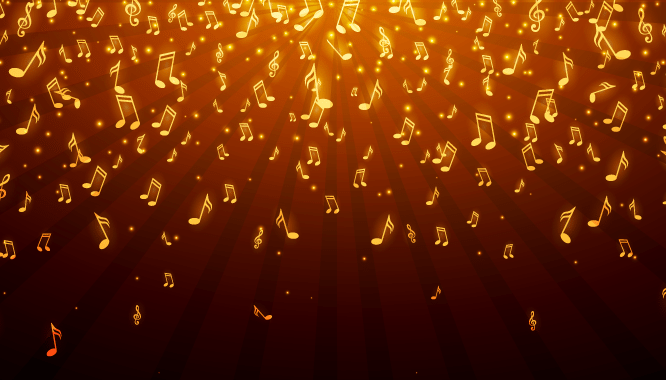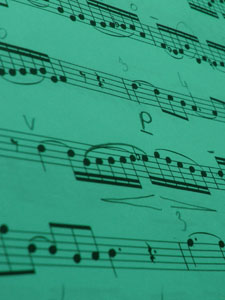What is a score
 The score in music is the musical notation of a polyphonic musical work intended for performance by an ensemble or orchestra, in which one part of another is given in a certain order, the parts of all the voices.
The score in music is the musical notation of a polyphonic musical work intended for performance by an ensemble or orchestra, in which one part of another is given in a certain order, the parts of all the voices.
When the musicians of the orchestra play, in front of each of them there is a part of their instrument on the console. But the conductor is in a more difficult position. In order to direct the orchestra, he must have before his eyes all the parts of the performed work.
For this purpose, serves the score (from the Latin “party” – “divide”, “distribute”).
It is a musical notation of all voices of a musical work – vocal, instrumental or vocal-instrumental, choral or mixed.
The parties of each instrument or voice are placed line by line in such a way that the beginnings of each measure in all parts are placed exactly above each other in a certain order and are combined with a common – whole or intermittent – timeline to visualize the coordination of all voices of the piece in time. In the scores, music is recorded for different voices of the work, performing compositions, and therefore the scores are orchestral, opera, ballet, chamber, vocal and choral.
Now it is difficult for us to imagine how we can do without the score of polyphonic music. However, in Europe in the late Middle Ages and the Renaissance there were no scores. The choir sang madrigal on the so-called choral book. It was (one for all singers) a rather large and weighty book written on parchment with wide pages, where the spread is very Kruzh, (for everyone to see) notes were written for all four or five voices (then this number was taken), but not over each other, as in a modern score, and separately.
Thus, at the turn of the choral book, the same musical measures were depicted, and the composer who wrote it could coordinate the movement of votes so that the laws of counterpoint were strictly observed. Around 1500 a different way of recording polyphonic music appeared – a composer’s board, covered with parchment or donkey skin, with carved (embossed) musical rulers. The composer wrote an excerpt from the composition in chalk — all the voices at once on a special ten linear musical instrument — and at the same time saw a picture of the whole polyphonic whole. When the passage was ready, he transferred it to voices, then erased what was written and started on the next passage. Of course, such a method could not become a universal means of recording, and with the development and complication of music, the need for such a method of disseminating works, where everything would be quite obvious, became more acute. This was the beginning of the score, first published in Venice in 1577. Soon, the score recording became dominant in the music of all European countries.
How is a modern score built? The main principle: high in the range of voice located at the top, and low – at the bottom. For example, the order of the choral score from top to bottom: soprano — alto — tenor — bass; the order of the score of the string quartet: first — second violins – viola – cello. In orchestral scores, the voices are arranged in groups, and Inside them – in height. For example, in the symphonic score at the top there are parties of woodwind instruments (flutes — goboes — clarinets — bassoons), behind them — brass (horn, trumpets, trombones, tuba), next — timpani and percussion parts, followed by harps, celesta, piano, organ; below is a group of stringed stringed instruments, as they are called, a quintet – the first and second violins, violas, cellos, double basses. The parts of harps, piano, organ, celesta are encircled with special curly brackets – accolades, and the rest of the groups – direct accolades.
The opera score is recorded in a similar way: the parts of the soloists and the choir are placed above the string quintet.
For a number of reasons, some instruments are written differently than they sound: for example, the piccolo flute sounds an octave higher than what is written in notes, the double bass and contrashose are an octave lower, etc. This situation puts high demands on the reading score, which mentally translates batches of relevant instruments back into the right key.



